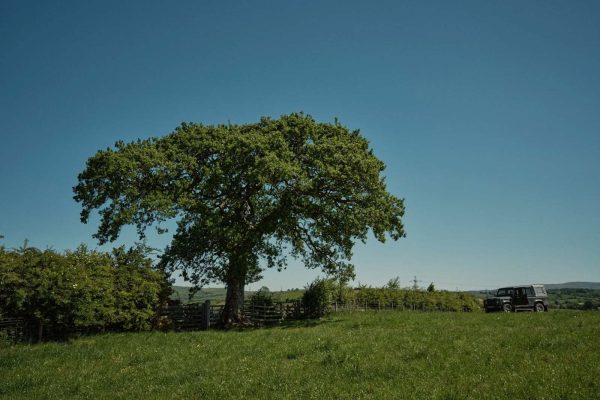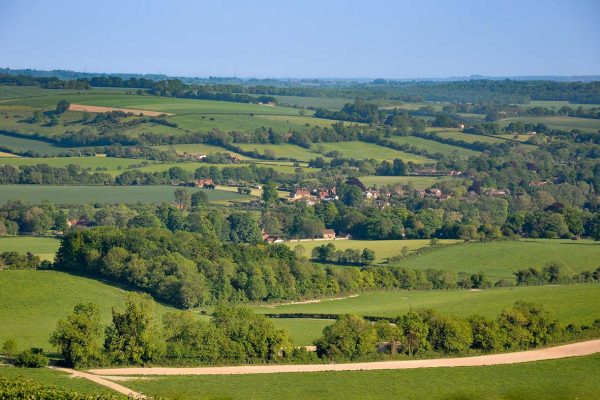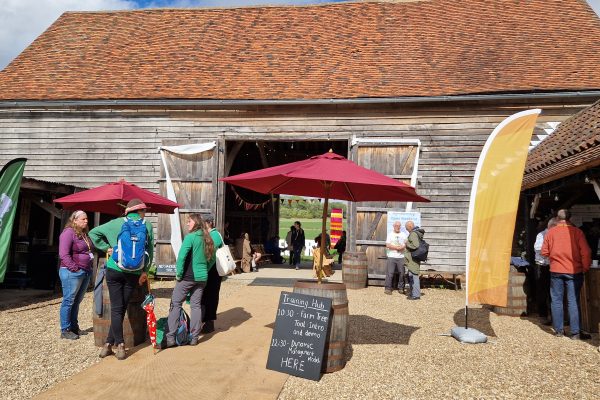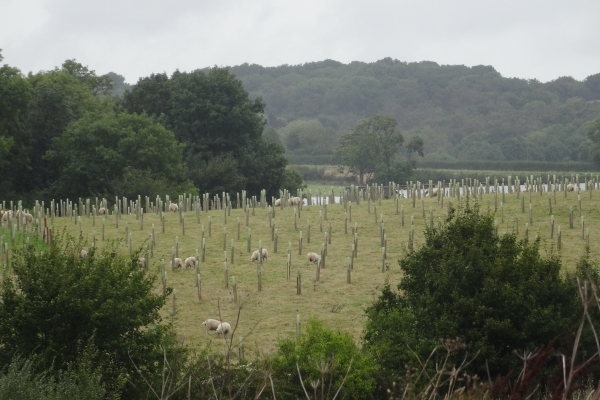The Agroforestry ELM Test project: Transforming the English agricultural landscape with trees
Interest among UK farmers in planting trees on their land has skyrocketed recently. Only ten years ago a survey indicated that very few farmers know what the term “agroforestry” means. One conducted least year showed that almost all farmers are familiar with it now. For current readers unaware of this term, agroforestry is simply the planting of trees on agricultural land with assumed benefits for existing agricultural processes (trees acting as a windbreak, or fodder for livestock, for example).
This surge in interest in agroforestry is not surprising. Ever since Brexit, English farmers at least have become aware that the replacement system for direct payments will involve them delivering improvements to the natural environment in some way (“public goods”), and what could be more improving of the natural environment than a tree; the ultimate carbon storer, the ultimate biodiversity booster, the ultimate eye candy of the natural world. More studious farmers may even have had a look at the standards for the new Sustainable Farming Incentive (SFI) which will undergo its first trials with farmers this year. Many of these standards make mention of providing habitat for birds and insects and make explicit mention of rewarding planting and maintenance of in-field trees. In fact, it’s safe to assume that planting trees on agricultural land will tick numerous of the “public goods” boxes in SFI and it is little wonder that farmers are clamouring for reliable information on agroforestry.
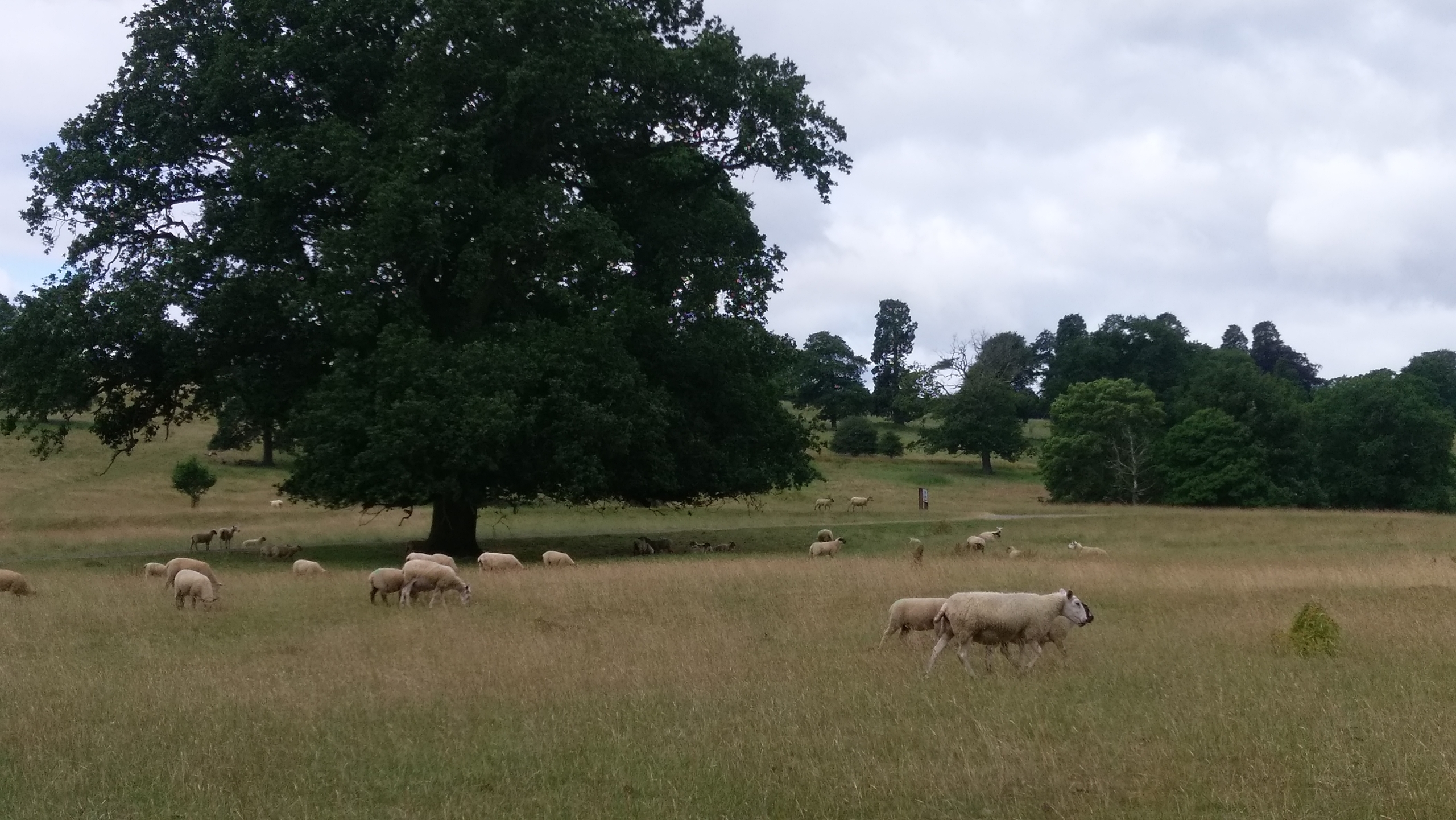
The aforementioned SFI is only one of three components of the UK government’s new post-Brexit system to replace direct payments from the EU: Environmental Land Management (ELM). The other two components are concerned with local nature and landscape recovery. ELM is still under development and as part of this process 60 or so Defra-funded Test and Trial projects are underway in which research teams from various agricultural stakeholder groups are interacting with farmers to advise government on a structure for ELM.
The Agroforestry ELM Test was awarded to a consortium led by Organic Research Centre (ORC) working with the Soil association, the Woodland Trust, and Abacus Agriculture. This project started in November 2020 and one of the first promised outputs was an evidence review to get to the bottom of why agroforestry uptake is so low in the UK. I was principally responsible for writing this report and I conducted what is known as a systematic review. I reviewed all the main literature sources currently available to us on why farmers are motivated or demotivated to undertake agroforestry in the UK. I found ten key surveys and reviews and read these through, extracting a total of 35 factors that could be important. After that I applied a quantitative algorithm to rank the importance of each factor based on how widely is has been assessed and whether it was considered a “critical factor” in previous studies. The top 10 factors influencing farmers adopting agroforestry in the UK are shown below:
- Lack of conceptual understanding and knowledge of agroforestry (top factor)
- Grants, subsidy, funding opportunities for agroforestry or lack thereof (tied second)
- Lack of practical understanding and knowledge of agroforestry (tied second)
- Establishments costs (tied third)
- Capital investment requirements (tied third)
- Management and maintenance costs (tied third)
- Reduced profitability and loss of yield (tied third)
- Lack of economic understanding of agroforestry (tied third)
- Access to case studies and demo farms (tied third)
- Clashes with existing agricultural processes and activities (tied third)
Nine tenths of these factors are either financial/economic or knowledge-based: farmers are concerned about the long terms costs of agroforestry and the availability of subsidies and they do not feel they know enough about agroforestry to go ahead and implement an agroforestry system.
The rest of the Agroforestry ELM Test project to date has involved the formation of six regional clusters of farmers, both involved and not involved in agroforestry, and coordinated by monitor farmers who are ensuring the project remains farmer focused. These cluster farmers will be interviewed in a series of future workshop meetings that will focus on payment and advice and guidance preferences of farmers for planting trees on their land. Consultation will then be expanded to the wider farming community.
The evidence review outlined above was a first critical step in designing workshops and ensuring they output useful information. It has already given us an idea of what payment options will need to include and so allows our workshops to be more focused and ask the right questions. Farmers clearly feel that agroforestry involves a lot of long-term capital and management investment and preferred payment options are likely to reflect this.
The advice and guidance issue is one that I feel is likely to be critical in determining the success or otherwise of the ELM system. It is clear from our evidence review that farmers don’t feel they know enough about agroecological systems like agroforestry to implement them. Farmers have not been sufficiently incentivised over the last 40 years to learn about how to use ecological principals to inform their farming, but now, following Brexit, this is exactly what they are being asked do. To some extent the Defra Tests and Trials are there to determine the nature of advice of guidance required, but additional clarifications from government would be useful. Will Defra be prepared to hire the army of farm advisors required to make ELM work? Will non-profits like ORC or the Soil Association be expected to assume this role? Can it all be done online through automated and semi-automated decision support? Will provision of advice on agroecological farming principles be left in the hands of the private sector?(!)
One thing that is becoming clear is that there needs to be a deep and rapid investment in farm advisory services and a shift in the type of advice farmers are receiving towards nature-based solutions for ELM to be a success.
Header image shows Wakelyns Agroforestry, Suffolk, UK aerial by Permaculture Association. CC BY-NC-SA 2.0





